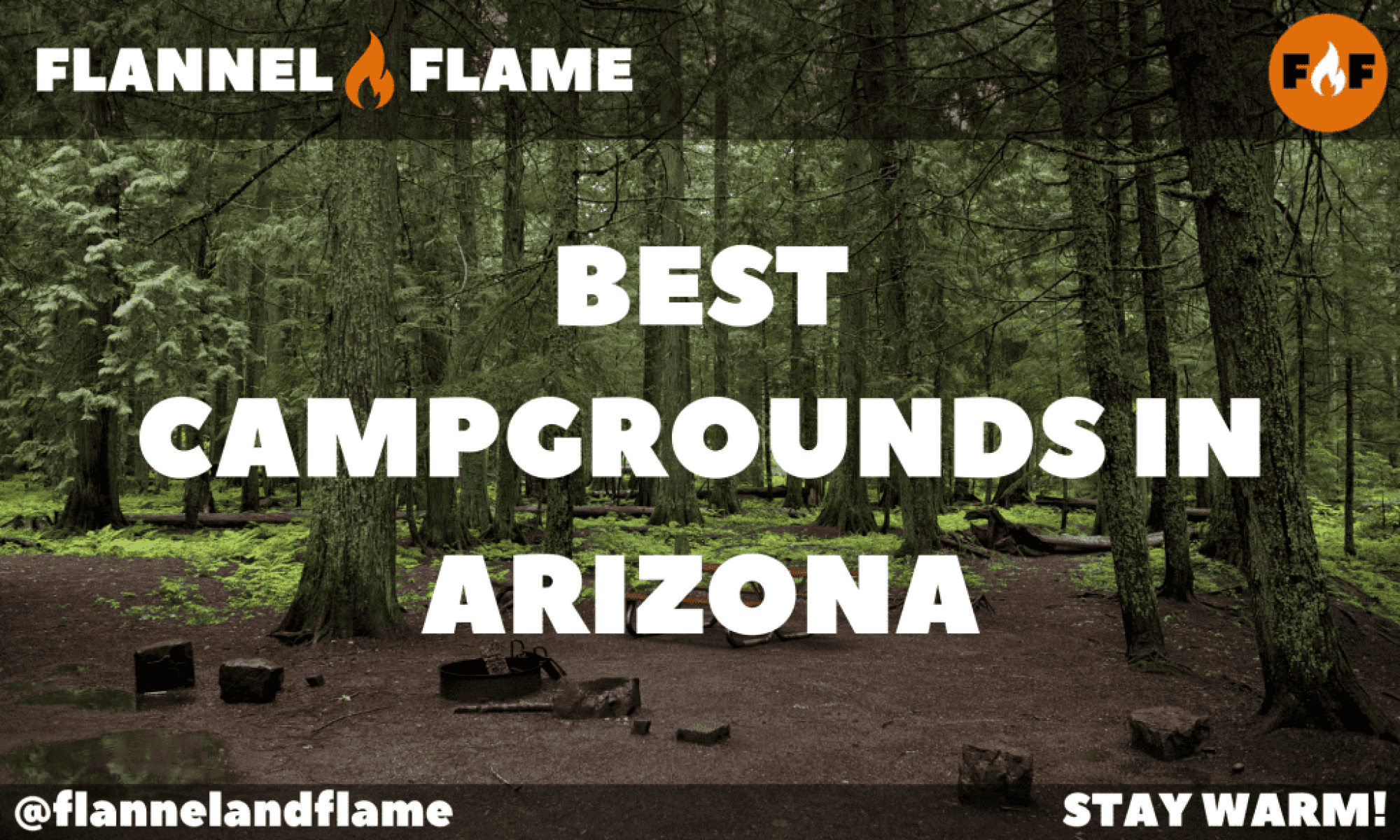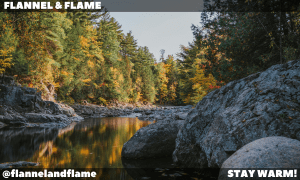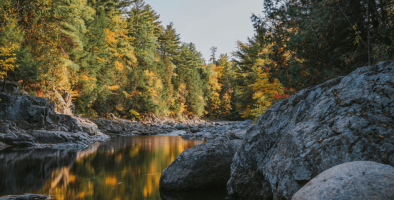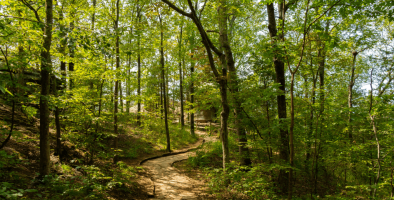Best Campgrounds in Arizona
Arizona’s diverse landscapes offer some of the most spectacular camping experiences in the American Southwest. From the pine-covered mountains of the Mogollon Rim to the saguaro-studded deserts of the Sonoran, and from the otherworldly red rock formations of Sedona to the depths of the Grand Canyon, Arizona’s campgrounds provide access to a stunning variety of ecosystems and outdoor adventures. The state’s unique geological history has created landscapes that seem almost alien in their beauty, while its clear, dark skies offer stargazing opportunities unmatched in the lower 48 states. Let’s explore the best places to pitch your tent or park your RV in the Grand Canyon State, where desert sunsets paint the sky and ancient landscapes tell stories of Earth’s distant past.
Grand Canyon National Park Mather Campground
Campsites: 327
Reservations: National Park Service Reservation System
Address: Market Plaza Rd, Grand Canyon Village, AZ 86023
Perched just a quarter-mile from the South Rim of one of Earth’s most spectacular natural wonders, Mather Campground offers an experience that transcends typical camping. Nestled among a forest of pinyon pine, juniper, and ponderosa, this historic campground provides the rare opportunity to sleep near the edge of geological time itself – where two billion years of Earth’s history is revealed in the colorful layers of the Grand Canyon.
The campground’s sites are thoughtfully arranged among the trees, offering dappled shade during Arizona’s sunny days and a sense of privacy despite the campground’s popularity. The scent of pine mingles with desert sage, creating an aromatic backdrop to the cool, high-desert air of the canyon rim, which sits at an elevation of 7,000 feet. At this elevation, the South Rim offers a pleasant respite from the scorching heat of lower Arizona, with temperatures typically 20 degrees cooler than Phoenix or Tucson.
What makes Mather truly extraordinary is its proximity to the Grand Canyon’s edge. A short walk or free shuttle ride from your campsite delivers you to viewpoints where the land simply falls away, revealing the breathtaking expanse of the canyon stretching toward the horizon. Dawn at these viewpoints offers perhaps the most magical experience – as early light gradually illuminates the canyon’s depths, revealing layer upon layer of red, orange, and purple stone descending a mile to the Colorado River below.
The campground’s central location provides easy access to the South Rim’s amenities and attractions. The Rim Trail offers 13 miles of mostly flat hiking with continuous canyon views, while the more challenging corridor trails like Bright Angel descend into the canyon itself. The Grand Canyon Village Historic District lies within walking distance, offering museums, ranger programs, and historic structures that tell the story of human history along the canyon rim.
Wildlife viewing opportunities abound even within the campground. Mule deer often wander between campsites at dawn and dusk, while Abert’s squirrels with their distinctive tufted ears scamper through the ponderosa pines. Lucky campers might spot California condors – brought back from the brink of extinction – soaring on thermal updrafts above the canyon’s depths.
As darkness falls, another dimension of the Grand Canyon experience emerges. The park’s designation as an International Dark Sky Park ensures minimal light pollution, allowing the Milky Way to emerge with startling clarity above the canyon’s silhouette. The juxtaposition of cosmic and geological time – stars whose light has traveled for millions of years shining down on rock layers that document billions of years of Earth’s history – creates a perspective-altering experience available to few other campgrounds on the planet.
With its combination of natural wonders, recreational opportunities, and interpretive resources, Mather Campground offers more than just accommodation – it provides a basecamp for exploring what many consider America’s most impressive natural landmark, a place where scale and beauty combine to humble even the most seasoned traveler.
Coconino National Forest Cave Springs Campground
Campsites: 84
Reservations: USDA Forest Service Reservation System
Address: 11250 N State Route 89A, Sedona, AZ 86336
Tucked into the verdant corridor of Oak Creek Canyon just north of Sedona, Cave Springs Campground offers perhaps the perfect antidote to Arizona’s desert stereotype. Here, in a lush riparian oasis between soaring red rock walls, campers find a microclimate of abundant water and shade that supports a remarkable diversity of plant and animal life just minutes from Sedona’s famous metaphysical vortexes and spiritual retreats.
The campground hugs the banks of Oak Creek, where sites are arranged among towering sycamores, Arizona cypress, and oak trees whose dense canopy creates welcome shade during warm months. The sound of the creek’s clear water tumbling over smooth stones provides a constant natural soundtrack, its gentle rhythm occasionally punctuated by the calls of canyon wrens echoing off the surrounding cliffs.
What makes Cave Springs truly special is its positioning within Oak Creek Canyon – often called “Arizona’s other Grand Canyon” for its impressive scale and beauty. The campground sits at the bottom of this geological wonder, where walls of Coconino sandstone and Supai formation rise nearly 2,000 feet on either side, their red and orange layers catching the sunlight at different angles throughout the day and creating an ever-changing display of color and shadow.
The campground derives its name from the natural springs that emerge from the canyon walls nearby, creating pocket oases where ferns and mosses thrive in the desert state. These springs, along with Oak Creek itself, make this area surprisingly lush and provide excellent swimming opportunities during summer months. Deep pools form along the creek’s course, offering refreshing respite from the heat and popular cliff-jumping spots for the adventurous.
Hiking opportunities abound directly from the campground. The West Fork Trail – consistently rated among Arizona’s most beautiful hikes – begins just a short distance away, leading into a narrow side canyon where creek crossings and soaring walls create a slot-canyon experience accessible to most fitness levels. For the more adventurous, numerous unmarked trails climb the canyon walls, rewarding hikers with panoramic views across the forested corridor to red rock formations beyond.
As evening approaches and shadows lengthen across the canyon, the campground takes on a magical quality. Sunlight filters through the tree canopy in golden shafts while the upper reaches of the canyon walls catch the day’s last light, glowing with intense orange and red hues. Night brings a special enchantment as well – while the canyon walls limit views of the full night sky, they frame a perfect ribbon of stars directly overhead, creating the feeling of camping at the bottom of a natural observatory.
With its perfect balance of natural beauty, recreational opportunities, and proximity to Sedona’s attractions, Cave Springs Campground offers one of Arizona’s most beloved camping experiences – a place where the harsh desert gives way to the nurturing presence of water, creating an oasis of green amid the state’s more characteristic red landscape.
Organ Pipe Cactus National Monument Twin Peaks Campground
Campsites: 208
Reservations: National Park Service Reservation System
Address: 10 Organ Pipe Dr, Ajo, AZ 85321
At the southwestern edge of Arizona, where the Sonoran Desert reaches its ecological peak before spilling into Mexico, Twin Peaks Campground offers an immersion into one of North America’s most distinctive desert landscapes. Located within Organ Pipe Cactus National Monument – designated an International Biosphere Reserve for its exceptional ecological significance – this campground provides front-row access to a desert ecosystem unlike any other in the United States.
The campground spreads across a gentle bajada (alluvial slope) with sites arranged thoughtfully among the desert vegetation. Unlike the barren stereotype of deserts, the Sonoran landscape here exhibits remarkable biodiversity, with sites nestled among the monument’s namesake organ pipe cacti, massive saguaros, and a variety of smaller cacti and desert shrubs. The ground between sites blooms with wildflowers following winter rains, transforming the desert floor into a carpet of color that contrasts dramatically with the always-blue Arizona sky.
What makes Twin Peaks truly extraordinary is its positioning within this unique corner of the Sonoran Desert – the only place in the United States where the distinctive organ pipe cactus grows wild. These unusual cacti, with their multiple arms rising from a single base like pipes of an organ, create a landscape that feels almost otherworldly, especially when silhouetted against the dramatic sunsets for which this region is renowned. The surrounding Ajo Mountains provide a dramatic backdrop, their rugged peaks catching the changing light throughout the day.
The campground serves as an ideal basecamp for exploring the monument’s remarkable network of scenic drives and hiking trails. The 21-mile Ajo Mountain Drive leads visitors through diverse desert habitats and past some of the most spectacular stands of organ pipe and saguaro cacti. For hikers, trails ranging from easy walks to challenging backcountry routes reveal hidden desert treasures – from ancient petroglyphs to secret tinajas (natural water catchments) that support surprising pockets of wildlife.
Wildlife viewing opportunities here are exceptional, especially during the cooler morning and evening hours. The desert comes alive with activity as Gambel’s quail scurry between cacti, gila woodpeckers hammer at saguaro trunks, and jackrabbits bound across open areas. Lucky visitors might spot more elusive residents like javelina, coyotes, or even the occasional bobcat. This region also hosts remarkable reptile diversity, with various species of lizards basking on sun-warmed rocks and several snake species active during warmer months.
As darkness falls over the desert, Twin Peaks offers one of the most spectacular night sky experiences available in the National Park system. The monument’s remote location and minimal development create ideal conditions for stargazing, with the Milky Way stretching from horizon to horizon on moonless nights. The silhouettes of organ pipe cacti against this stellar backdrop create photographic opportunities that capture the essence of the Sonoran night.
With its combination of unique desert ecology, international significance, and truly dark skies, Twin Peaks Campground offers a desert camping experience that reveals the Sonoran Desert at its most biodiverse and beautiful – a place where the apparent harshness of the desert environment gives way to reveal remarkable adaptation and resilience.
Lake Havasu State Park Campground
Campsites: 47
Reservations: Arizona State Parks Reservation System
Address: 699 London Bridge Rd, Lake Havasu City, AZ 86403
Where azure waters meet rugged desert mountains, Lake Havasu State Park Campground offers a perfect synthesis of Arizona’s contrasting landscapes. This oasis in the Mojave Desert provides direct access to one of the Southwest’s premier water recreation destinations – a 45-mile-long reservoir created by Parker Dam on the Colorado River. The campground’s prime shoreline location makes it one of Arizona’s most sought-after camping destinations, especially during the milder months when desert heat gives way to perfect temperatures for outdoor adventure.
The campground is arranged along terraced levels overlooking the lake, with most sites offering panoramic views across the water to the barren mountains beyond. Unlike many desert campgrounds, mature trees provide welcome shade throughout the camping area – a luxury in this sun-drenched corner of Arizona. The contrast between the lake’s cool blue expanse and the surrounding desert landscape creates a visual spectacle that changes with the light throughout the day.
What makes Lake Havasu truly unique is its fascinating blend of natural beauty and unusual history. The campground sits near the famous London Bridge – yes, the actual London Bridge that once spanned the Thames River – transported stone by stone from England and reassembled here in the desert in 1971. This surreal juxtaposition of historic European architecture against a backdrop of saguaro-studded mountains creates one of Arizona’s most distinctive camping locations.
The lake itself serves as the primary focus for recreation. The campground’s location provides easy access to swimming beaches, boat launches, and watercraft rentals that open up exploration of the lake’s countless coves and channels. Anglers prize the lake for its bass fishing, while water sports enthusiasts find perfect conditions for everything from kayaking to water skiing. In the springs and coves around the lake, cliff jumping spots offer thrilling plunges into deep blue waters that stay refreshingly cool even during the hottest desert days.
The surrounding desert isn’t overshadowed by the lake’s recreational opportunities. Numerous hiking trails lead into the nearby mountains, offering spectacular views across the water and opportunities to experience the Mojave Desert ecosystem up close. Spring wildflower blooms transform the seemingly barren landscape into a palette of unexpected color, while wildlife including desert bighorn sheep, wild burros, and a variety of raptors can be spotted among the rugged terrain.
As evening approaches, the lake’s surface becomes a mirror reflecting the changing colors of sunset. The western sky ignites in spectacular displays of orange, pink, and purple that double in intensity as they reflect off the water’s surface. After dark, the clear desert air and minimal light pollution create excellent stargazing conditions, with the Milky Way arching overhead and reflecting in the calm waters of protected coves.
With its perfect combination of water recreation, desert exploration, and unique historical features, Lake Havasu State Park Campground offers a multifaceted Arizona camping experience – a place where the harshness of the desert is softened by the presence of life-giving water, creating an oasis of activity and natural beauty in one of the Southwest’s most extreme environments.
Mogollon Rim Woods Canyon Lake Campground
Campsites: 155
Reservations: USDA Forest Service Reservation System
Address: Highway 260, Forest Road 105, Payson, AZ 85541
High above the desert floor, along the dramatic 2,000-foot escarpment that divides Arizona’s high country from its lower deserts, Woods Canyon Lake Campground offers an alpine camping experience that feels worlds away from the state’s cactus-dominated image. Nestled among ponderosa pines at 7,500 feet elevation, this campground sits at the edge of one of the Mogollon Rim’s most beautiful lakes, where cool mountain air and abundant shade create a perfect summer retreat from Arizona’s notorious heat.
The campground is arranged in loops that follow the natural contours of the forested terrain, with sites tucked among massive ponderosas and groves of quaking aspen that shimmer with golden light when their leaves catch the breeze. The forest floor is carpeted with pine needles and dotted with wildflowers during summer months, while the rich scent of pine resin permeates the cool air. The sound of wind moving through the pine canopy creates a constant soothing background that occasionally mingles with the distant call of ospreys fishing over the lake.
What makes Woods Canyon Lake truly special is its positioning along the Mogollon Rim – a geological feature that cuts diagonally across Arizona and forms the southern edge of the Colorado Plateau. The dramatic change in elevation creates a biological island of cool forest amidst the state’s warmer landscapes, supporting plant and animal communities more commonly associated with the Rocky Mountains than the Southwest. The campground provides easy access to viewpoints along the rim where the land drops away dramatically, offering panoramic vistas that stretch over a hundred miles on clear days.
The 55-acre lake adjacent to the campground serves as the recreational focal point. Its clear, cool waters reflect the surrounding pines and clouds drifting overhead, creating a serene atmosphere that invites contemplation. Trout fishing draws anglers to its shores and waters, while a 5.5-mile lakeside trail provides perfect opportunities for nature observation. The lake hosts surprising wildlife diversity, from ospreys and bald eagles that hunt its waters to elk and mule deer that emerge from the forest to drink at dawn and dusk.
Beyond the immediate vicinity of the lake, extensive recreational opportunities await on the surrounding Rim country’s network of trails. The famous Highline Trail traverses the base of the rim for nearly 50 miles, offering day-hiking options with constant views of the escarpment towering above. For the more adventurous, forest roads lead to remote fire lookout towers and hidden meadows where wildflowers bloom in spectacular profusion during summer months.
As evening approaches and temperatures drop under the forest canopy, the campground takes on a magical quality. Campfires cast dancing light on the trunks of surrounding pines while the calls of owls echo through the forest. After dark, the lake’s surface becomes a black mirror reflecting a sky filled with stars visible only at higher elevations where air clarity reaches its peak. The Milky Way appears with uncommon brilliance, seeming close enough to touch in the thin mountain air.
With its perfect combination of alpine forest setting, recreational opportunities, and cooler temperatures, Woods Canyon Lake Campground offers an essential counterpoint to Arizona’s desert reputation – a place where elevation transforms the landscape into a mountain haven that showcases the remarkable ecological diversity of this southwestern state.
Catalina State Park Campground
Campsites: 120
Reservations: Arizona State Parks Reservation System
Address: 11570 N Oracle Rd, Tucson, AZ 85737
At the base of the magnificent Santa Catalina Mountains just north of Tucson, Catalina State Park Campground offers the quintessential Sonoran Desert camping experience. This 5,500-acre park captures the essence of southern Arizona’s iconic landscape, where saguaro forests stretch toward rugged mountain peaks and seasonal washes cut through the desert floor. The campground provides comfortable access to this remarkable ecosystem while sitting at an elevation that moderates the extreme desert temperatures, creating an ideal basecamp for exploring the biological richness of the Arizona uplands.
The campground spreads across gently rolling terrain with sites thoughtfully arranged to maximize both privacy and views. Most sites sit among magnificent stands of saguaro cacti – those iconic desert sentinels that can reach heights of 40 feet and ages exceeding 150 years. These majestic plants create distinctive silhouettes against both the daytime sky and the sunset backdrop of the Catalina Mountains, whose peaks rise dramatically to over 9,000 feet just beyond the campground.
What makes Catalina truly special is its position at the ecological boundary between desert and mountain environments. The park sits within the Arizona Upland subdivision of the Sonoran Desert – the highest and wettest part of this desert ecosystem, supporting remarkable biodiversity. Over 5,000 saguaros stand within the park boundaries, along with diverse plant communities including mesquite bosques, riparian corridors, and desert grasslands. This variety creates habitat for an astonishing array of wildlife, from tiny hummingbirds to mountain lions that occasionally descend from the higher elevations.
The park’s extensive trail system reveals the richness of this desert landscape. The Canyon Loop Trail leads to seasonal pools and waterfalls within Romero Canyon, where water brings explosive life to the desert after rainfall. The challenging Romero Canyon Trail climbs from desert to pine forest, crossing multiple life zones as it ascends nearly 3,000 feet to Romero Pools – natural swimming holes that offer perfect respite during warmer months. Archaeological sites throughout the park reveal evidence of the Hohokam people who irrigated and farmed this land nearly 1,500 years ago.
Wildlife viewing opportunities here are exceptional, particularly during the cooler hours around dawn and dusk. Mule deer browse among the mesquite bosques, while coyotes can be heard singing their distinctive choruses as darkness falls. The diverse bird population includes Gambel’s quail, roadrunners, and dozens of specialized desert species, making this a popular destination for birders. During summer months, the park comes alive with reptile activity, including the chance to observe various lizard species basking on sun-warmed rocks.
As day transitions to night, the true magic of desert camping emerges. The setting sun illuminates the Santa Catalina Mountains with an intensity of color that seems almost artificial – deep oranges and purples that gradually yield to the profound darkness of the desert night. The clear air and Tucson’s relatively strict light pollution ordinances allow for excellent stargazing, with the distinctive shape of saguaros creating unforgettable silhouettes against the star-filled sky.
With its perfect balance of developed facilities and pristine desert environment, Catalina State Park Campground offers perhaps the most accessible immersion into the true character of the Sonoran Desert – a place where visitors can experience the surprising richness of what initially appears to be a harsh and unforgiving landscape.
Final Thoughts About Camping in Arizona
From the arid deserts of the south to the pine forests of the rim country, from the depths of the Grand Canyon to the shores of Lake Havasu, Arizona’s diverse campgrounds showcase the remarkable ecological and geological diversity of the Southwest. Each location offers a distinct window into the natural forces that have shaped this remarkable state, where extreme landscapes create both challenges and opportunities for those seeking to connect with the outdoors. Whether you’re seeking the perfect desert sunset, alpine forest serenity, or the incomparable star-filled sky that only clear desert air can provide, Arizona’s best campgrounds invite you to explore landscapes that continue to inspire wonder in all who visit them.
Other States to Explore
More from Flannel & Flame…
- Mexican Bean SaladBold, zesty, and bursting with color, this Mexican Bean Salad is a side dish that brings the flavor anywhere you roam. A hearty mix of black, kidney, and cannellini beans comes together with crisp bell peppers, sweet corn, and red onion, all tossed in a citrusy vinaigrette loaded with fresh cilantro and just the right… Read more: Mexican Bean Salad
- Cheesy PotatoesGolden, gooey, and loaded with flavor, these Dutch Oven Cheesy Potatoes are a campfire favorite that never disappoints. Tender hash browns are layered with melted cheese, savory seasonings, and just the right amount of smoky goodness from the fire. Baked slow and steady in a Dutch oven, this comforting side dish is perfect alongside grilled… Read more: Cheesy Potatoes
- Alternatives to S’Mores: Sweet Twists and Campfire Treats You’ll CraveThere’s something undeniably magical about a gooey s’more melting between your fingers under a starlit sky. The way the chocolate gets just soft enough, the marshmallow smolders to a golden hue (or charred to a crisp, if that’s your thing), and the graham crackers give that perfect crunch — it’s the taste of summer, nostalgia,… Read more: Alternatives to S’Mores: Sweet Twists and Campfire Treats You’ll Crave
- Best Hiking in New YorkWilderness, waterfalls, and wonder from the Catskills to the Adirondacks New York might be synonymous with skyscrapers, yellow cabs, and a certain iconic skyline—but trust me, beyond the hustle of the city, the Empire State hides some of the most jaw-dropping trails in the Northeast. We’re talking misty mountaintops, mossy forests, gorges carved by ancient… Read more: Best Hiking in New York








